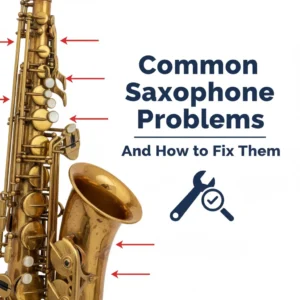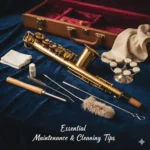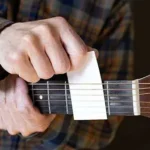Saxophone problems can be a headache for musicians, especially with the leaks. These problems mostly include sticky keys and dislodged springs. Poor embouchure is another common saxophone problem that gets better with fixing. If you’re a musician, then you may have experienced poor tone. This is associated with saxophones in particular. Fixing sticky keys is pretty simple, as you just need a thin piece of paper. And if the concern is loose springs, re-seat the spring on its post. But that’s not all, as sometimes saxophone problems know no end.
This blog has explained common saxophone problems and how to fix them.
Statistics And Insights For Saxophone Problems And Their Fixes
Growing Saxophone Popularity
The musical market was valued at a large amount in 2024, which is $16.6 billion.
Wind instruments in particular contribute about 12% of it.
Common Saxophone Issues Reported
For saxophones, many have reported issues after 2 years of use. If we talk numbers, 68% of saxophone players face it. The most common issues here are air leaks or pad issues.
Maintenance Frequency & Impact
It is recommended by many professionals that saxophone maintenance is a must. A 6-month gap between cleaning and adjusting the saxophone is alright. The resale value of saxophones goes up by 35% if it is well-maintained.
What Are The Most Common Saxophone Problems And How To Fix Them?
Low Note Issues
If you’ve been using a saxophone for a while now, then you may know about this. Low note troubles are common with saxophones, which happen due to many reasons. Bell keys can cause this issue, which is commonly seen. It may also involve the upper stack keys, so look out for that. This happens with stuffy low notes, which isn’t what you want. Sometimes, it doesn’t even speak at all, which needs fixing.
Common Fixes:
Low notes are all about your air, so you need to check that out. To start, first you need to check if all the pads are sealed properly.
You need to check these in particular:
- Low C# keys
- Low B keys
- Low Bb keys
If you don’t find any issue here, then check in the upper stack.
Check these keys for leaks:
- Palm keys
- F/F# keys
Octave Key Problems
For musicians, high notes are made possible with the octave keys. Now, for that to happen, the octave keys must work properly. But if it’s malfunctioning, you need to fix the saxophone. Saxophone students can’t play properly this way. This happens if the octave key mechanism is stuck.
Common Fixes:
Gently bend the mechanism for key position adjustment. This works for minor malfunctions of the octave key in saxophones. But for complex issues, a professional repair is best.
Neck Attachment Issues
Saxophone students commonly face the issue of not being able to attach the neck. The neck needs to be attached to the saxophone body properly to start.
Common Fixes:
For this saxophone problem, you can use a pencil. The pencil helps in applying graphite in a thin layer, which is needed here. This is applied around the cork as a lubricant to fix the issue. This way, you can attract the neck more easily in saxophones.
Sticky keys
Has this happened to you, that the saxophone keys don’t spring back up? This common saxophone problem is faced by many, as leaks often occur. Sticky keys can also affect the notes.
Common Fixes:
For a quick fix, you can start by using a piece of paper for this issue. This paper works for absorbing the residue that may be causing the keys to stick. You just need to slide that paper between the pad and the tone hole for this to work. If this doesn’t work, then you can use a cotton swab that is dampened.
G# Key Issues
As the G# Key is linked with many other keys, it can be complex. This is a source of confusion for many saxophone players.
Common Fixes:
For an issue with the G# Key in saxophones, find the adjustment screw. This is a quick fix when the G# key isn’t closing properly. Make small adjustments using a tiny screwdriver so that the keys close nicely.
When Does Professional Repair Become A Need?
- Notes don’t sound properly
- Difficulty playing softly
- Sticky keys
- Increasing key noise
- Bent or wobbly keys
- Loose neck tenon
- Damaged pads
Conclusion
For musicians and students, saxophone problems are a common concern. These can occur after 2 years of use, where common fixes help. Issues regarding sticky keys and low notes can be fixed if you do it the right way.
FAQs
Q – What problems are common with alto sax?
A – In alto saxophones, these problems are the most common:
- Neck Attachment Problems
- Octave Key issues
- Low Note Troubles
Q – How do I check for saxophone leaks?
A – You can check for saxophone leaks with these methods:
- Using a leak light
- Playing the instrument
- Using soapy water for the neck
Q – Why do saxophones stop playing?
A – Here are some of the common issues:
- Broken neck cork
- Air leaks
- Stuck keys
- Dents
Q – How do I test if my new saxophone is good?
A – To check if your saxophone is good, play it first in the store surroundings.





